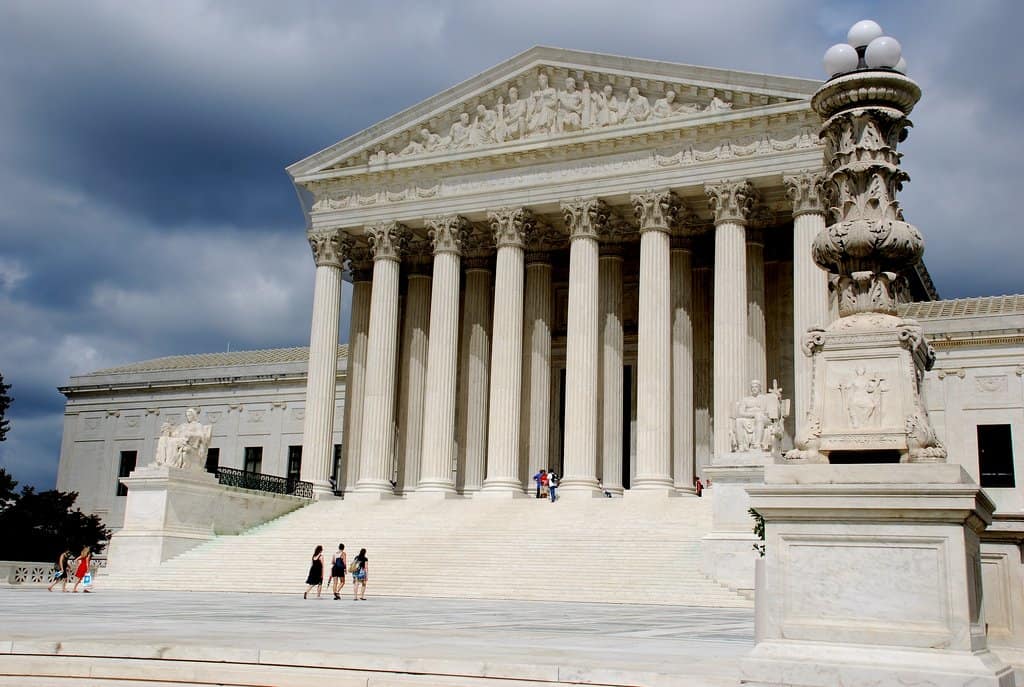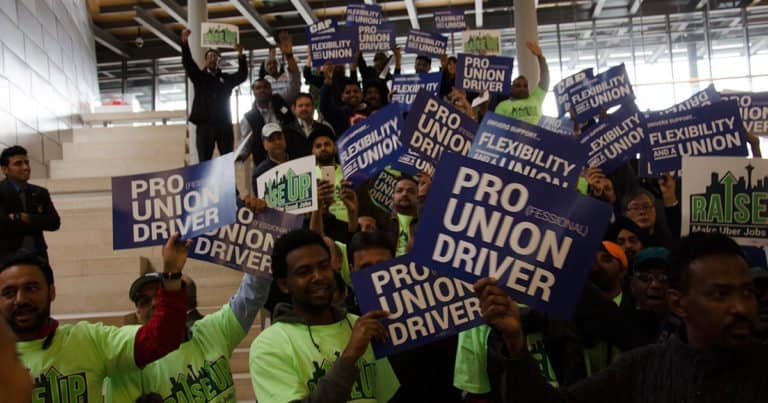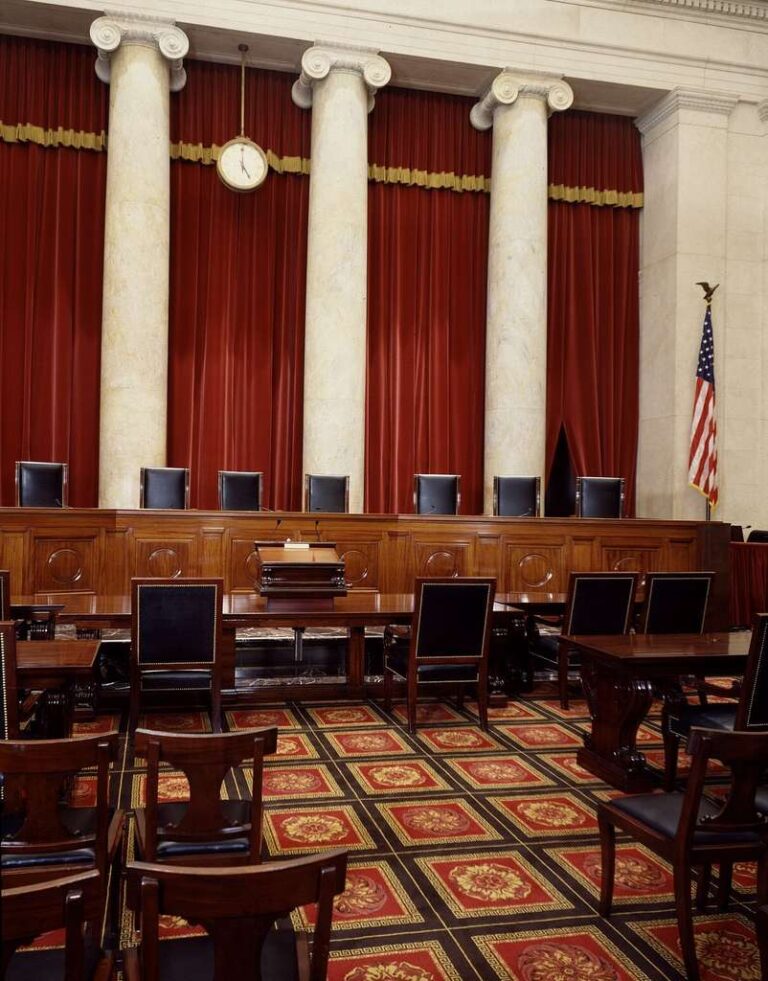
Jonathan R. Harkavy has taught labor and employment law at Wake Forest School of Law and corporate finance at Duke Law School and the University of North Carolina at Chapel Hill School of Law. During the summers of 2018 and 2019, he has been a visiting research fellow in the Labor and Worklife Program at Harvard Law School.
The upcoming Supreme Court term is already brimming with consequential employment law issues on its argument docket. But fair warning: There is little promise that the Court’s treatment of these issues will advance the cause of workplace justice or please current and retired working people. Indeed, the anodyne term just ended may have been a mere calm before the storm. To this observer, the storm clouds are now visible.
First, three employment discrimination cases are expected to determine once and for all whether Title VII’s unequivocal and unadorned prohibition of sex discrimination covers gay and transgender working people. The fate of gender justice in the workplace for the LGBTQ community rests on what the Court does in these cases, all of which are scheduled for argument on October 8, 2019.
- Bostock v. Clayton County, Georgia, No. 17-1618, and Altitude Express Inc. v. Zarda, No. 17-1623, specifically ask the Court to decide whether discrimination against an employee because of one’s sexual orientation constitutes discrimination “because of . . . sex” under Title VII. In these two cases consolidated for argument, the Court will address this question both in the public sector (Bostock concerns a gay child welfare services coordinator employed by a Georgia county) and the private sector (Zarda concerns a now-deceased gay sky-diving instructor employed by a now-dissolved corporation.) The Court granted review after consideration at 14 separate conferences. As of July 3, 2019, a total of 42 amici briefs had been filed in support of Title VII coverage of sexual orientation discrimination.
- R. G. and G. R. Harris Funeral Homes, Inc. v. EEOC, No. 18-107, presents the following issue as formulated by the Court: “Whether Title VII prohibits discrimination against transgender people based on (1) their status as transgender or (2) sex stereotyping under Price Waterhouse v. Hopkins, 490 U. S. 228 (1989).” Like the sexual orientation cases, this transgender discrimination dispute was considered at 13 conferences and has provoked 47 amici briefs in support of the charging party trans-female funeral director.
Second, the inevitable fallout from Janus v. AFSCME, Council 31, 585 U.S. —-, 138 S. Ct. 2448, 201 L. Ed. 2d 924 (2018), is continuing to hit the Court. Although review of a First Amendment challenge to the principle of exclusive representation is yet to be granted, see, e.g., Bierman v. Walz, 139 S. Ct. 2043 (cert. den. May 13, 2019) and Uradnik v. Inter Faculty Organization, 139 S. Ct. 1618 (cert. den. April 29, 2019), the petitions for certiorari in Miller v. Inslee, No. 18-1492, and Branch v. Massachusetts Department of Labor Relations, No. 19-51, currently stand out among the prospects for Supreme Court review. Indeed, the Court recently ordered that a response to the Miller petition (which is supported by three amici briefs) be filed by August 27, 2019. Stay tuned!
Third, a trio of retirement plan cases may affect the scope and manner of ERISA regulation of retirement benefit plans. These cases arrive at a critical time, just as the boomer generation is leaving the workforce and beginning to live on their expected retirement benefits.
- Intel Corp. Investment Policy Committee v. Sulyma, No. 18-1116, involves when the three-year limitations clock under ERISA section 413(2) starts ticking. The specific question is whether “actual knowledge” of a fiduciary breach occurs when a plan sponsor furnishes information for plan participants to see or when the participant actually reads the furnished information. The National Association of Manufacturers and a cohort of employer-side representatives filed an amicus brief at the certiorari stage supporting the former view, and there is reason to believe that the Court will narrow ERISA’s protection by equating an employer’s disclosure of information with a participant’s “actual knowledge” of a breach of duty. This case is not yet scheduled for argument.
- Retirement Plans Committee of IBM v. Jander, No. 18-1165, involves the kind of allegations necessary to sustain an ESOP “stock drop” claim. The choice of a rigorous or generous pleading standard highlights respectively the critical tension between preserving the ESOP as an investment choice for 401(k) plan participants or easing the way for those participants to sue whenever there is a material decline in the price of an employer’s stock. The stakes are high for plan sponsors and participants alike, and the Chamber of Commerce and other business groups weighed in early at the certiorari stage on the side of a rigorous pleading standard. The case is scheduled for argument on November 6, 2019.
- Thole v. U. S. Bank, N.A., No. 17-1712, addresses whether a defined-benefit plan participant or beneficiary may seek restoration of plan losses or other equitable relief without demonstrating actual or imminent individual financial loss. In granting certiorari, the Court also ordered the parties to brief whether the plaintiff participants and beneficiaries have demonstrated Article III standing. The Solicitor General and the Department of Labor filed a CVSG brief expressing the view that a plan’s overfunded or underfunded status should not matter in determining whether a participant or beneficiary may seek relief under ERISA. With this support from the Solicitor General and the DOL, there is reason to believe that the Court will permit ERISA breach of duty claims without regard to whether a claimant can prove individual financial loss. The case is not yet scheduled for argument.
Note also that the Court has before it a petition presenting a fundamental issue that has split the circuits: Who has the burden of proof on loss causation in an ERISA breach of duty case? That is, do plaintiffs have the burden of proving loss causation or do defendants have the burden of disproving it? Putnam Investments, LLC v. Brotherston, No. 18-920, could answer that question if the Court grants the petition. The Chamber of Commerce and a number of cohorts have filed amici briefs supporting review, and the Court has invited the Solicitor General to file a brief expressing the views of the United States. Although predictions are ever hazardous, a grant of certiorari looks like a good bet, particularly if the Solicitor General’s CVSG brief supports review.
Fourth, a pair of additional cases should decide whether a claimant must prove “but-for” causation in order to win a federal sector age discrimination employment case or a race discrimination commercial claim under Section 1981. Babb v. Wilkie, No. 18-882 involves an ADEA challenge to personnel actions of a federal agency, and Comcast Corp. v. National Association of African American-Owned Media, etc., No. 18-1171, involves a Section 1981 claim of race discrimination in a commercial setting. (The latter case is pertinent here because Section 1981 is often used in employment discrimination claims.) The Court will have an opportunity here to clarify yet again the degree of proof necessary to prevail on a discrimination claim. The Comcast case is scheduled for argument on November 13, 2019. The Babb case is not yet scheduled for argument.
Finally, be mindful that the Court is far from filling its merits docket for the upcoming term. So, its continued focus on the employment relationship may yet yield more issues of interest. For now, however, the foregoing cases give us a pretty clear view of the storm clouds on the new term’s horizon.






Daily News & Commentary
Start your day with our roundup of the latest labor developments. See all
October 20
Supreme Court won't review SpaceX decision, courts uphold worker-friendly interpretation of EFAA, EEOC focuses on opioid-related discrimination.
October 19
DOL issues a new wage rule for H-2A workers, Gov. Newsom vetoes a bill that regulates employers’ use of AI, and Broadway workers and management reach a tentative deal
October 17
Third Circuit denies DOL's en banc rehearing request; Washington AG proposes legislation to protect immigrant workers; UAW files suit challenging government surveillance of non-citizen speech
October 16
NLRB seeks injunction of California’s law; Judge grants temporary restraining order stopping shutdown-related RIFs; and Governor Newsom vetoes an ILWU supported bill.
October 15
An interview with former NLRB chairman; Supreme Court denies cert in Southern California hotel case
October 14
Census Bureau layoffs, Amazon holiday hiring, and the final settlement in a meat producer wage-fixing lawsuit.